- Home
- Simon Winchester
Pacific Page 4
Pacific Read online
Page 4
Then, most crucially of all, there is China—the world’s most populous nation, fast ascending to the ladder tops, to the summits, of almost every measurable feature of modern humankind. This proud and ancient and imperturbable nation lies on the far side of the Pacific from America, the most powerful nation the world has ever known; it is easy to imagine that both are now glissading toward a rivalry and a possible confrontation that could easily end less than well for either party.
And then there is the sea itself, the fathomless expanse of vastness—of Robinson Jeffers’s “staring unsleeping Eye of the earth”—which the islanders know and care for, even if so many outsiders manifestly do not. The Pacific Ocean—now almost freed from its former European control, yet brimming with new disputes, a region that is tectonically and meteorologically dangerous—is in serious environmental peril, is ringed with nations undergoing immense internal change, is unimaginably busy with commerce, has come to be at the forefront of science and self-discovery, but is at the same time also peopled by many clinging tenaciously to its old ways, as well as by civilizations, East and West, that seem steadily to be beginning to understand one another, and all this is occurring in a setting of philosophical and spiritual renewal and among fantastic yet threatened beauty.
It is the most turbulent ocean in the world, and an expanse of sea that should be central to all our thoughts. Is the ocean to be a place of coming war? Is it to be our eventual savior, a place so beautiful and fragile that its sheer vastness will one day demand that we pause in our careless and foolish behavior in the rest of the world? Or will it be something in between: a pillar of hope and example and good sense poised between East and West, on which, for good or ill, we construct humanity’s future?
The book that follows is an account of this modern Pacific, the story of the development of the ocean in the sixty-five tumultuous years that began on January 1, 1950.
1 Statistics bear out the easily forgotten reality that whites—haoli, in the vernacular, a word uttered with some disdain—are a minority on the Hawaiian Islands. Their 336,000 (in 2010) are matched by almost half a million from countries around or within the Pacific Ocean, including 200,000 Filipinos and 185,000 Japanese. Eighty thousand only are native Hawaiians.
2 Tsingtao beer, its brewery long overseen by a German brewmaster, remains the most visible reminder of the kaiser’s historic influence in eastern China. While the beer retains the old Wade-Giles transliteration of its name, the city itself is now restyled Qingdao.
3 There can be few more impressive examples of German engineering than this eighteen-thousand-ton, thirty-two-knot (and exceptionally beautiful) warship, since she survived not only innumerable strikes by RAF bombers during the war, but also two nuclear tests in the Bikini atoll lagoon, where she was placed as a target for one air-dropped bomb and for a massive underwater weapon called Helen of Bikini. Still floating after the second test, but fiercely radioactive—all her crew would have died—she was towed to Kwajalein, developed a leak, and capsized, her enormous guns falling out of their barbettes and onto the seafloor. One of her screws has now been placed in a museum; the others remain visible at low tide. Prinz Eugen will never be salvaged, however, since her steel is still lethally contaminated.
AUTHOR’S NOTE: ON CARBON
New Year’s Day 1950 was a Sunday, and by and large, as the clocks ticked and chimed and boomed their way into the first year of the century’s fifth decade, the world seemed to have settled into a fairly stable place, with memories of the Second World War starting to fade, and scant suggestion of any of the turmoil soon to come.
The Japanese, still busily repairing their country and still occupied by American forces, had some small reason for good cheer that day, with the ending of their custom of declaring children to be one year old at birth and of everyone adding a year to his or her age each January 1. This change meant that all eighty million Japanese would not become numerically older on this day: a forty-year-old would wait until his next actual birthday before becoming forty-one. For a brief while that morning, all Japanese were said to have suddenly felt younger.
There was smaller cheer for New Yorkers. The canned music that had flooded the concourse of Grand Central Terminal for the previous three months, and that had whipped silence-loving commuters into a mutinous fury, was turned off, and forever. Riders on the New York Central regained their sanity; the calm of the everyday hubbub was resumed. For a while, some relieved New Yorkers were said to feel suddenly younger, too.
And in England, a teapot lid maker named Elizabeth Hulme and a man from Lancashire named James Jackson, whose job was listed as “mule spinner,” said to be a textile-related occupation, were each given awards for the contributions they had made to these crafts, in a ceremony at Buckingham Palace. In Britain nothing else of great significance occurred, according to the day’s newspaper accounts.
Beyond, in the outside world, most of the men of note then charged with running the world could count on remaining some time yet in power. Truman, Atlee, Stalin, Adenauer, Franco, Tito, Perón—even comparative newcomers such as Kim Il Sung and Mao Zedong—were all, for now, lying easy in their beds. There were similarly complacent kings and queens and princes in abundance, from Egypt to Tonga and Kathmandu, together with an emperor in Japan, a shah in Persia, and a grand duchess in Luxembourg, mostly respected, occasionally revered, and all, for now, reigning in comparative comfort.
Yet there were shifts in the wind. The grandest of the world’s monarchies was still England’s, with the incumbent, King George VI, still technically able to say that he reigned over a quarter of the world’s population, with his empire still in rude good health. Except that just three weeks into the New Year, his hold on one of those dominions would weaken when, as expected, Jawaharlal Nehru proclaimed India to be a republic. And farther still around the world, a little-known Vietnamese Communist named Ho Chi Minh would, at the year’s beginning, commence a series of negotiations with China and the Soviet Union that would eventually ensure that the French would be turfed wholesale out of Indochina, and would leave Asia forever.
But these small hints aside, if cracks were beginning to appear in the settled order of the world, they were only hairline, visible to few, and troubling to almost no one.
Except, that is, for one development that is still marked indelibly on that New Year’s Day of 1950, and that came to be regarded in a pair of ways: as being, first, of the gravest moment and, second, of lasting, perhaps even everlasting, scientific significance.
Three months previously, on September 3, 1949, a Geiger counter mounted in the nose of an American B-29 weather-monitoring plane that was flying reconnaissance missions in the western Pacific between Yokota in Japan and Eielson Air Force Base in Alaska, began to chatter furiously. Puzzled technicians swarmed to examine the records and soon determined that atomic radiation seemed to be pouring into the sky, from somewhere.
Two days later a second plane, based in Guam, flew over the same route and picked up signs of even more radioactivity: barium, cesium, and molybdenum fission isotopes were found in the upper atmosphere, signatures that suggested that either there had been a nuclear accident somewhere to the east of the plane’s track or someone had exploded an atomic weapon.
It turned out to be the latter. An atomic bomb known in Russia as First Lightning and elsewhere, eventually, as Joe 1, had been exploded by Joseph Stalin’s Soviet Union five days before, in an experiment conducted at a hitherto unknown and subsequently top-secret nuclear test site at Semipalatinsk, in Kazakhstan. The successful exploding of the bomb, which was modeled on, looked uncannily like, and was in fact slightly more powerful than the plutonium weapon dropped by the Americans four years previously over Nagasaki, stunned the outside world. Few Americans and few of their allies thought the Soviets would be able to catch up with the United States in terms of nuclear capability for many more years. But as was discovered a decade later, Moscow had a spy in Los Alamos, Klaus Fuchs; and though debate contin
ues to this day about how valuable the information was that this brilliant young Briton passed to the Soviets, it is generally agreed that, perhaps more than any other spy before or since, Klaus Fuchs changed world history.
For by allowing the Soviet Union to construct nuclear weapons, and ultimately to make hydrogen bombs and all the other terrible paraphernalia of the nuclear age, his gift of secrets permitted the Cold War between East and West officially to commence—with the consequence that for the next half century, and perhaps for longer still, the planet lived in the shadow of the very real possibility of nuclear annihilation.
There was another consequence of this development, however—that to this day is of great significance to the scientific community and, as it happens, has some bearing on the structure of this book. It concerns radioactive pollution.
The explosion in the atmosphere over the coming Cold War years of hundreds upon hundreds of atomic bombs—big and small; fission and fusion; to be launched by missiles or dropped by aircraft or fired from guns; made by the United States, the Soviet Union, Britain, France, China, Israel, India, Pakistan, North Korea, or perhaps Iran—would contribute to the pollution of the earth’s atmosphere by myriad poisonous and radioactive decay products. Until atmospheric testing was banned in 1963, the world was living under a blanket of increasingly radio-polluted air, with effects that would be likely to last for thousands of years.
Crucially, one of the many products created by atomic explosions is the unstable radioactive isotope of carbon known as carbon-14.
This isotope is already naturally present in the world (its presence caused by cosmic ray bombardment), in extremely tiny but measurable amounts. Compared with the amount of normal, nonradioactive carbon-12 in the air, about one part in a trillion is carbon-14.
Plants absorb this carbon during photosynthesis, and animals that consume the plants absorb it, too. So while an animal or a plant is alive, its cells contain both carbon-12 and carbon-14, and in the same ratio as exists in the atmosphere.
However, once the plant or animal dies, its cells stop absorbing carbon—and at that precise moment, the ratio of the two isotopes begins to change, for the simple reason that carbon-14 is unstable, and begins to decay. The isotope has a half-life of 5,730 years, meaning that after that period, half of it will have vanished. After another 5,730 years, half of what remains will have disappeared, and so on and so on. And, it is important to note, the changing ratio of carbon-12 to carbon-14 in the dead animal or plant can be very accurately measured.
What followed this discovery—first made in 1946 by a University of Chicago chemist named Willard Libby, who would win the Nobel Prize for it—was the realization that by measuring the amount of carbon-14 remaining in a dead creature or plant, it should be possible to date, and with some precision, just when that plant or animal died. Thus was born the technique of carbon dating, and it has been in use ever since, a vital tool of archaeologists and geologists in determining the age of found organic materials.
The technique requires one constant, though: for any age calculation to be accurate, the baseline ratio of naturally occurring carbon-12 and carbon-14 has to be a real baseline—it must, in other words, stay the same as it always has been. The figure accepted by Libby and his colleagues and used as the base was the aforementioned one to a trillion: one atom of carbon-14 to one trillion atoms of carbon-12. With that figure firmly in place, the age calculations could be made, and reliably.
But then came the unexpected. As soon as the testing of atomic bombs began in earnest in the 1950s, that baseline figure suddenly began to change. The bombs created immense mushroom clouds of lethal chemistry. They thrust, among other things, a sizable amount of extra carbon-14 into the atmosphere, upsetting the baseline figure and causing the dating calculations suddenly to go awry.
Radiochemists around the world monitored the situation, and as the levels of new carbon kept increasing, test by test, year by year, they kept on writing algorithms to correct the distortions caused by the bombs. But as more and more bombs produced more and more unstable carbon, the situation was fast becoming complicated, irritating; and for a world that placed value on near-absolute precision, it threatened to render age determinations so inaccurate as to be useless.
To address this problem, a decision was reached that would unscramble matters. A date was chosen before which radiocarbon dating could be regarded as accurate, because the baseline was constant. Radiocarbon results that were achieved after that selected date would continue to be regarded with suspicion.
And the date selected—of what is now known as the start of the standard reference year, or the Index Year—was January 1, 1950. Before January 1950 the atmosphere was radiochemically pure. After January 1950 it was sullied, fouled by bomb-created isotopes. So this date, this otherwise unexceptional Sunday when Ho Chi Minh began his campaign in Vietnam, when the Japanese started recalculating how old they were, the day the music died in Grand Central Terminal, would become for scientists a new Year Zero.
The choice of the date was scientifically elegant, logical, and precise. And it would soon spread beyond the world of science alone. For it would have an impact on the entire question of what was meant by the use of the simple word ago.
Science had until this point never been involved in the creation of human calendars. The fact that these words are being written in the year 2015 has to do, not at all with science, but with the decidedly nonscientific and imprecise concepts of myth, faith, and belief. For, in refining the meaning of ago, most of the Western world would employ the initials BC and AD. It was said that something occurred a number of years “before Christ,” or in the Year of the Lord, “Anno Domini,” as in AD 2015.
But this was, of course, contentious to non-Westerners, to nonbelievers. It was a kind of notation that would fall foul of those for whom Jesus Christ meant little; and so in recent times other circumlocutions were offered to help soothe hurt feelings. There was BCE, most commonly, which referred to “before Christian Era” or, for the secular-minded, “before Common Era.”
Yet even this was still a fudge, still woefully imprecise, still essentially based on myth. And BCE did not appeal to scientists, especially once carbon dating and other, more precise atomic dating techniques had been discovered. So they eventually came up with the idea of using the initials BP, “before present.” The Wisconsin ice age, for instance, had its culmination fifty thousand years BP.
All that the acceptance of this new notation required was an agreement on just when was present? So, in the early 1960s, a pair of radiochemists came up with an answer. They suggested the use of the same standard reference year, the Year Zero moment of January 1, 1950.
Their suggestion seemed logical, neat, appropriate. Everyone, more or less, agreed. So that date is now accepted well-nigh universally among scientists for the ephemeral concept that is fleetingly known as the present. And the present begins at the start of January 1950.
And it seemed to me also the ideal date to use for beginning a description of the modern Pacific Ocean.
Other dates were briefly beguiling, to be sure. It could be argued that the new Pacific truly began its unfolding at the end of the Second World War—so I could have chosen the date of the Japanese surrender, September 2, 1945. Or else I could have selected Mao Zedong’s declaration of the founding of the People’s Republic of China, a momentous and solemn occasion that was staged on October 1, 1949, and that would eventually turn the Pacific into a cauldron of contention. I briefly also thought of using the date of the detonation of America’s most powerful hydrogen bomb, the so-called Castle Bravo test of March 1, 1954, a moment of some symbolism.
Yet I kept coming back to the idea of the “beginning of present,” which just seemed to have an elegant simplicity about it. The date has a strict scientific neutrality to it. It is an agnostic moment, agreed to and understood by all. And for this book, it turned out to have an added geographical bonus, a coincidence.
For nearly all
the carbon-14 pollution that was sent up into the skies and that caused the scientific community to create the concept of “present” and “before present” in the first place came as the result of explosions that occurred in the Pacific. Bombs that went off in Bikini and Enewetak, Christmas Island and Woomera, Semipalatinsk and Lop Nor, Mururoa and Fangataufa, all in or around the ocean, were the prime pollutants, the original cause of the problem.
This made it all the more appropriate, it seemed to me, to choose that moment—the hinge, the dividing line, between purity and impurity—as the start line for this account. The story of the ocean of tomorrow, in other words, begins at the start of the present.
[Marzolino/Shutterstock, Inc.]
Chapter 1
THE GREAT THERMONUCLEAR SEA
I remembered the line from the Hindu scripture, the Bhagavad Gita . . . “I am become death, the destroyer of worlds.”
—J. ROBERT OPPENHEIMER, JULY 16, 1945, ON THE DETONATION OF THE FIRST A-BOMB, NEW MEXICO
The unleashed power of the atom has changed everything save our modes of thinking, and thus we drift toward unparalleled catastrophe.
—ALBERT EINSTEIN, MAY 24, 1946, TELEGRAM SENT TO PROMINENT AMERICANS
The first hint that the Pacific would be tragically transformed into the world’s first and only atomic ocean came at lunchtime on January 4, when President Harry S. Truman uttered a single cryptic sentence during his State of the Union address for 1950, to this effect: “Man has opened the secrets of nature and mastered new powers.” He never mentioned the Pacific by name; nor did he mention it two weeks later, on January 19, when he finally made the fateful decision to which his congressional speech had alluded. Nor did he, two further weeks on, when he issued a formal directive and announced publicly what he had decided.

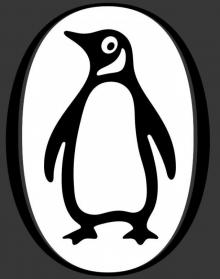 The Surgeon of Crowthorne
The Surgeon of Crowthorne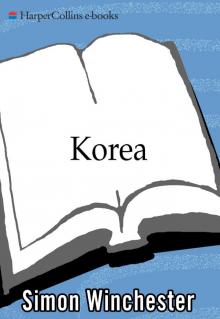 Korea: A Walk Through the Land of Miracles
Korea: A Walk Through the Land of Miracles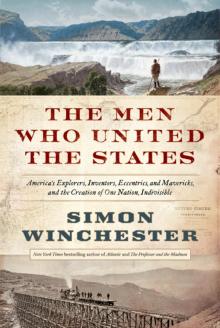 The Men Who United the States: America's Explorers
The Men Who United the States: America's Explorers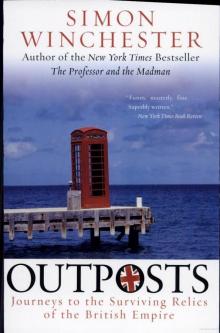 Outposts: Journeys to the Surviving Relics of the British Empire
Outposts: Journeys to the Surviving Relics of the British Empire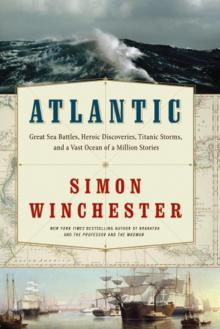 Atlantic: Great Sea Battles, Heroic Discoveries, Titanic Storms
Atlantic: Great Sea Battles, Heroic Discoveries, Titanic Storms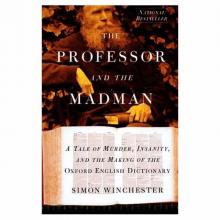 The Professor and the Madman: A Tale of Murder, Insanity
The Professor and the Madman: A Tale of Murder, Insanity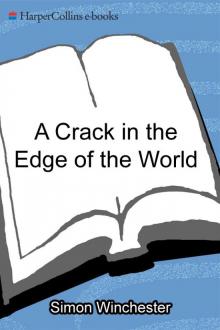 A Crack in the Edge of the World
A Crack in the Edge of the World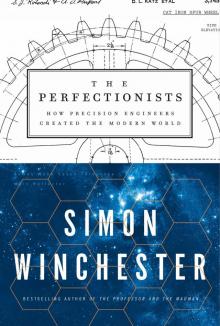 The Perfectionists: How Precision Engineers Created the Modern World
The Perfectionists: How Precision Engineers Created the Modern World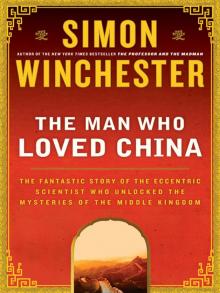 The Man Who Loved China: The Fantastic Story of the Eccentric Scientist
The Man Who Loved China: The Fantastic Story of the Eccentric Scientist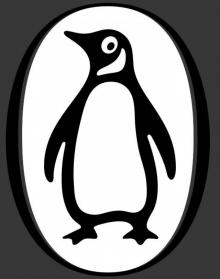 The River at the Center of the World: A Journey Up the Yangtze
The River at the Center of the World: A Journey Up the Yangtze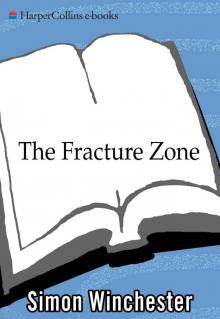 The Fracture Zone: My Return to the Balkans
The Fracture Zone: My Return to the Balkans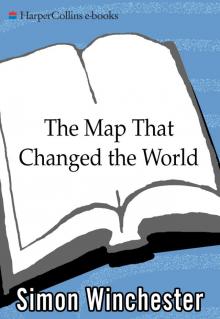 The Map That Changed the World
The Map That Changed the World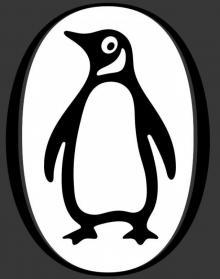 Krakatoa: The Day the World Exploded
Krakatoa: The Day the World Exploded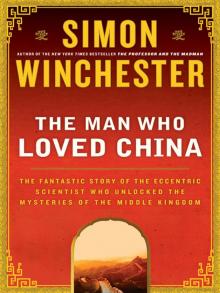 The Man Who Loved China
The Man Who Loved China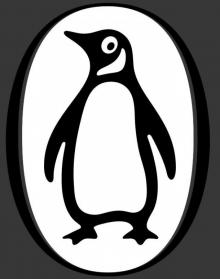 The River at the Centre of the World
The River at the Centre of the World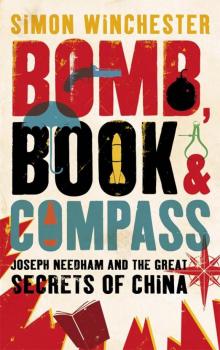 Bomb, Book and Compass
Bomb, Book and Compass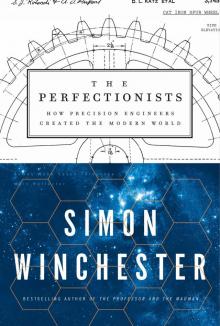 The Perfectionists
The Perfectionists The Meaning of Everything
The Meaning of Everything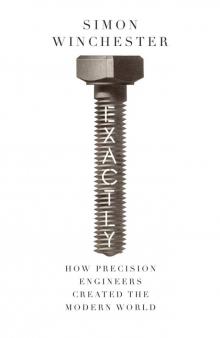 Exactly
Exactly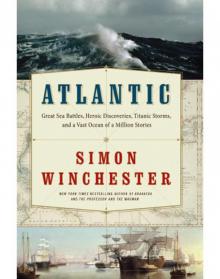 Atlantic
Atlantic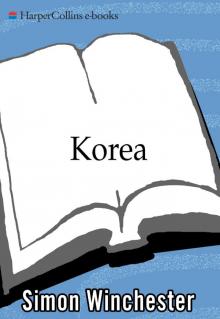 Korea
Korea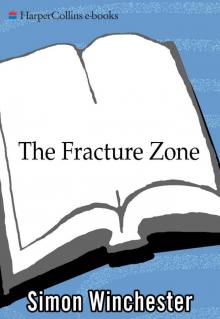 The Fracture Zone
The Fracture Zone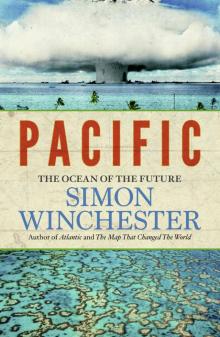 Pacific
Pacific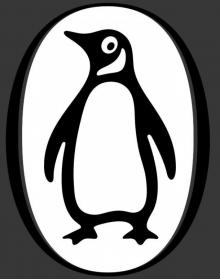 Krakatoa
Krakatoa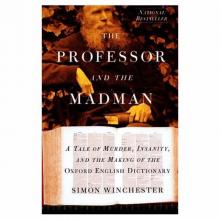 The Professor and the Madman
The Professor and the Madman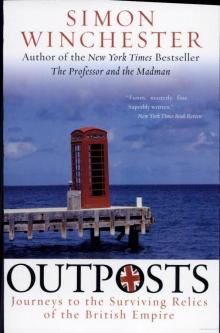 Outposts
Outposts